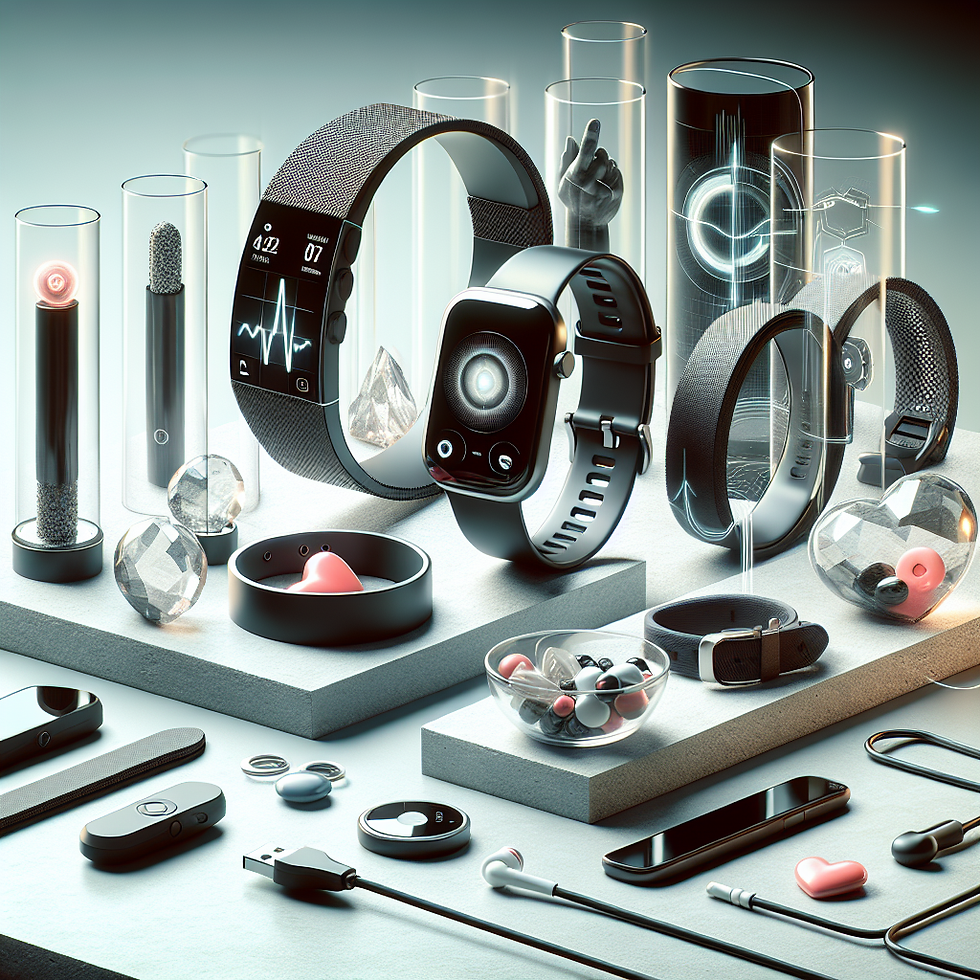Revolutionizing EP: The Anatomy of PFA Catheters
- Michael Browers
- Mar 29, 2024
- 3 min read

In a realm where technology's heartbeat syncs with human health, Pulsed Field Ablation (PFA) emerges as a beacon of innovation, transforming the battleground against atrial fibrillation (AF). This condition, characterized by rapid and irregular heart rhythms, has met its match in the precision and safety of PFA. By employing electrical pulses rather than traditional thermal energy to ablate or scar the problematic cardiac tissue, PFA promises a new dawn for patients and practitioners alike. It's within this context that giants of the industry, Boston Scientific and Medtronic, have recently received the FDA's nod, catapulting PFA from the fringes of experimental procedures to a central player in cardiac care in the United States and internationally.
This watershed moment is not just a victory for these companies but a leap forward for medical science and patient care. The approval paves the way for the widespread adoption of PFA, offering a glimpse into a future where AF can be managed with unprecedented precision and minimal risk. But what lies beneath this groundbreaking technology? At its core, the design and anatomy of PFA catheters reflect a confluence of engineering brilliance and medical insight. From the electrode tip that makes contact with the heart's tissue to the handle that guides the physician's hand, each component of the catheter is a testament to the meticulous craftsmanship and innovation driving this medical revolution.
ELECTRODE TIP: The Pulse of Innovation

At the heart of PFA catheter technology lies the electrode tip designed to deliver energy for cardiac tissue ablation and varies in design from a linear single-point electrode tip to very complex multi-spline designs for large area focal ablation and single-shot ablation techniques.
Materials: Typically made from conductive materials like platinum or gold for efficient energy delivery and minimal tissue adhesion.
Design Attributes: Optimized shape and size for precise energy delivery and lesion formation.
Manufacturing Processes: Precision machining of precious metals, laser cutting and post processing of complex nitinol structures, polymer extrusion, laser welding
SHAFT: Navigating the Future

The shaft, a flexible tube that connects the electrode tip to the handle, designed to navigate through the vascular system to the heart.
Materials: Constructed from flexible, durable materials like polyurethane or Pebax® for optimal flexibility, durability, and biocompatibility.
Design Attributes: Constructed from flexible, durable materials like polyurethane or Pebax® for optimal flexibility, durability, and biocompatibility.
Manufacturing Processes: Manufacturing involves extrusion for the shaft, with secondary processes like laser cutting for lumens and adding reinforcement for strength.
HANDLE: In Hand, On Point

The catheter handle allows the physician to control the catheter’s movements and functions during the procedure.
Materials: Constructed from medical-grade plastics or composites, designed for durability and sterilization compatibility.
Design Attributes: Ergonomically designed for optimal control, integrating mechanisms for catheter steering or electrode contact adjustment.
Manufacturing Processes: Handles are made using injection molding, with subsequent assembly of mechanical controls.
CONNECTORS: Linking Technology with Care
Connectors enable the catheter to interface with the energy source and mapping systems, transmitting electrical signals and data.
Materials: Made from conductive metals or alloys, ensuring reliable electrical connection between the catheter and the ablation or mapping system.
Design Attributes: Connectors are designed for ease of use and secure attachment, prioritizing electrical noise reduction and system compatibility.
Manufacturing Processes: Precision machining and assembly, with rigorous testing for electrical continuity and mechanical reliability.
MAPPING & NAVIGATION TECHNOLOGY: Leading with Precision
Integrated technologies assist in precise positioning and delivery of therapy, often including advanced software compatibility for real-time guidance and visualization during ablation procedures.
Materials: Utilizes conductive and advanced sensor materials for electromagnetic or ultrasound navigation.
Design Attributes: Integrated sensors and electrodes are designed to provide high-resolution electrical and anatomical maps of the heart.
Manufacturing Processes: The process involves assembling small electronic parts and precisely tuning sensors for accurate heart mapping and navigation.




Comments